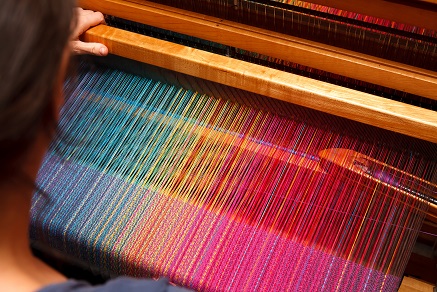W is for Weaving
Posted on 22 December, 2018

According to finds of burned cloth remnants and fabric imprints in clay found at the Dolní Věstonice archeological site in the Czech Republic, weaving was practised as early as 27,000 years ago and these Paleolithic weavers were already producing plaited basketry and woven cloth.
Further finds across the world suggest that weaving was known to all the great civilisations, but it is unclear as to when the practice actually started.
Weaving is a method of textile production in which two sets of yarns are interlaced at right angles to form a fabric. Woven fabrics are made up of a weft - the yarn going across the width of the fabric - and a warp - the yarn going down the length of the loom.
Fabric is usually woven on a loom, a device that holds the warp threads in place while weft threads are woven through them and the way the warp & weft threads interlace with each other is called the weave. The majority of woven products are created with one of three basic weaves: plain weave, satin weave, or twill.
Woven fabrics include denim, flannel, twill & satin and they are known for being higher quality fabrics. Woven fabrics are usually stronger than knit fabrics, and are known to hold their shape better.
Learn more about fibres by visiting our advice centre.
Recent Articles
FutureFest 2025: A Day of Adventure with the Greggs Foundation
Dimensions Secures Exciting New Partnership with Avis Budget Group for Bespoke Uniform Range
Future Hotel Manager Leila Gets Her Very Own Mini Uniform (and Teddy!)
Dimensions Donates 40 Pairs of Shoes to Support Children in Need
A First Look at the New Nationwide Uniform With a Bit of Show and Tell